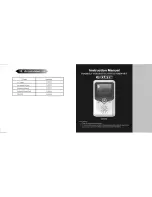
PAGE 9
7340-20
60706-186
Generator Connections
Minimum Conductor Sizes between the Generator and the
ATS. Based on wire type and temperature rating. Wire
has been derated for 40
o
C ambient temperatures.
CU Conductor
AL Conductor
C/B
Wire Temperature Rating
kW Amp
75
0
C
90
0
C
75
0
C
90
0
C
15 60
#4 AWG
#6 AWG
#3 AWG
#4 AWG
To gain access to the customer connections remove the
end panel opposite the hot air discharge end. All connec-
tions including AC & DC connections to the ATS, 120 Volt
power connection for battery charger, and battery installa-
tion are made behind this panel. After removing the end
panel you will need to remove the cover over the connec-
tion box in the upper right hand corner. Knockouts are
provided on the outside of the enclosure for your conve-
nience. See page 16 for unit layout.
Four AC power leads are required between the generator
and the A.T.S.; Two hot leads, a neutral and a ground
lead.You will then need to run both a neutral and a ground
lead in addition to the two power leads all the way back to
your distribution panel. The two power leads from the
generator are marked G1 and G3.
All power leads from the generator to the A.T.S. must be
sized to handle rated generator output amperage at a
minimum, (62 Amps). The type of wire you use will
determine the gauge required. Consult your local wire
supplier for proper gauge and type for your installation.
In addition to the power leads you will also need to run a
three wire 120 volt, 15 amp GFCI circuit from your
distribution panel to the generator. This circuit will be
used to power the battery charger.
The last two wires you will need are the DC control leads
(14 or 16 gauge) for the start circuit in the A.T.S. These
last two connections will be discussed later in more detail.
WINCO UL ATS (ASCO165) & (ASCO 300)
See the ASCO installation manual for additional
details on proper wiring of the Automatic Transfer
Switch.
The standby generator terminals in the A.T.S are marked
“ALTERNATE L2 & L6”. The “hot” leads G1 and G3 from
the generator are connected to the terminals L2 & L6.
The normal line power terminals in the A.T.S. are marked
“PREFERRED - L1 & L5”. The “hot” line power leads are
L1 and L3 from your normal power supply are connected
to terminals L1 and L5.
The load terminals in the A.T.S. are marked “LOAD - L3 &
L7”. The leads to the load distribution panel are connect
to terminals L3 & L7.
The neutral leads from all three locations are connected to
the isolated terminal lugs on the sidewall of the cabinet.
This terminal block is labeled “NEUTRAL” and the
terminal lugs are mounted on red isolation standoffs.
The ground leads from all locations are connected to the
grounded terminal lugs, also on the side wall. This set of
terminals is labeled “GROUND”.
INSTALLATION NOTES
The load current carrying wires (L) and (T) must be sized
to handle the maximum load current without excessive
voltage drop. By code, the wire must be heavy enough to
handle the full current rating of the main line circuit-
breaker (or fuse) in the entrance (or sub-panel) protecting
the contactor switch.
All wires should be installed in rigid or flexible conduit.
(Knockouts are provided in the control box)
Because of the many different types of service, feeder,
and distribution equipment, no specific wiring instructions
can be provided. It is, however, recommended that only
copper wire be used. In all cases it is essential that while
the load is connected to the generator, there can be
absolutely no feedback from the generator to the power
line or the power line to the generator. When properly
installed, the normal A.T.S. control and safety systems will
eliminate all paths for feedback. Check with your local
electrical inspector on applicable local, state and federal
codes.
*************
***** WARNING *****
*************
A service disconnect must be installed in front of the
A.T.S. panel as the A.T.S is not service entrance rated.
This will allow you to test the generator under load.
Should you ever have to work on the switch, you will be
able to disconnect the power and work on the switch cold
without having the power company pull your meter.
To wire the automatic transfer switch into the existing
wiring, first determine which circuits will be on the
emergency load circuit. If the entire load is to be trans-
ferred, the transfer switch can be wired in directly after the
watt-hour meter and the service entrance, providing the
service entrance ampere rating is within the transfer
switch’s rated capability.






































